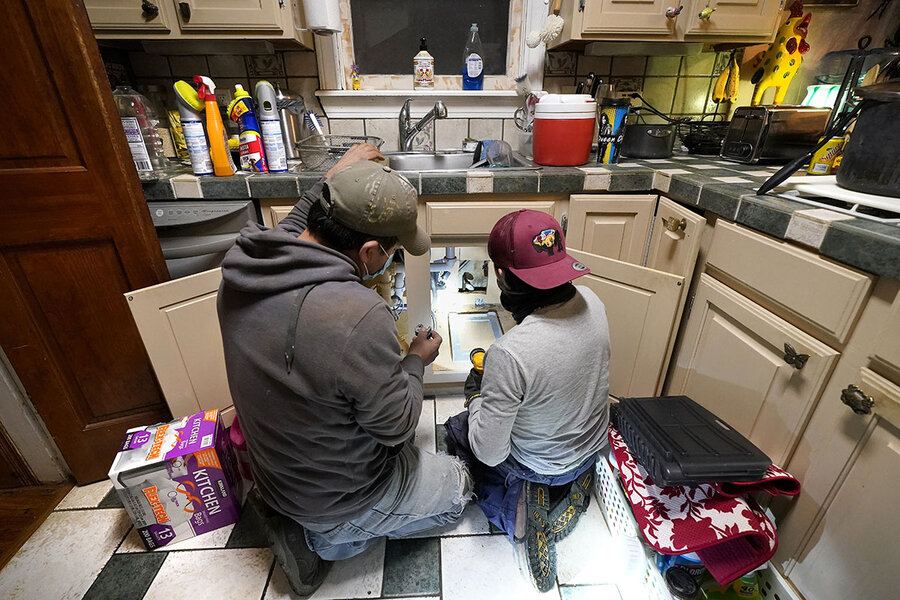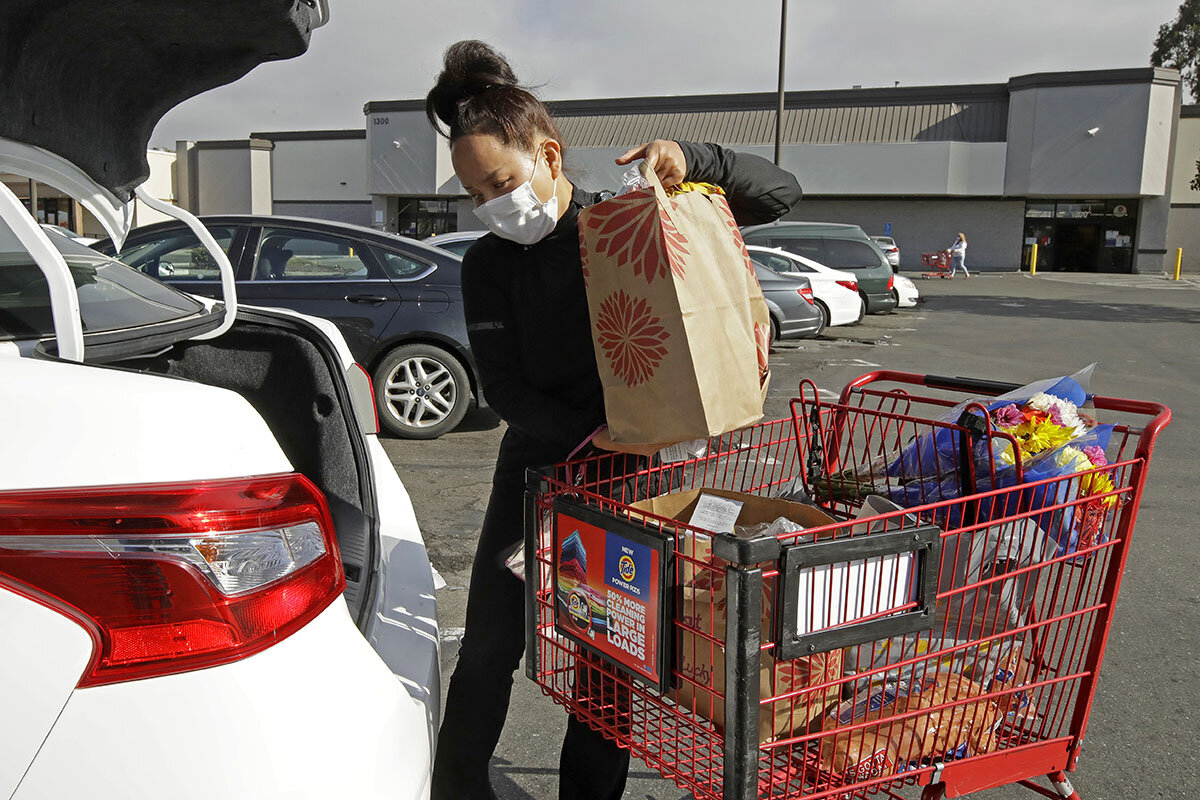Should gig workers become employees? A fairness question resurfaces.
Loading...
In trying to answer the question – When are workers employees? – the Biden administration has reignited a long and roiling controversy over fairness in the workplace.
Is it best to try to protect workers from unscrupulous firms that don’t offer minimum wage or benefits? Or by applying such traditional standards to a new and burgeoning freelance workforce, is the federal government holding back entrepreneurial Americans from supplementing their income?
There is no easy answer because these workers – part of the so-called gig economy – vary greatly in their needs and outlook. Whatever the administration implements in the coming months, it could affect the incomes and livelihoods of more than a third of Americans.
Why We Wrote This
A story focused onA federal rule change proposed this week would shift the balance on a difficult question that goes far beyond Uber drivers: how to draw fair and honest distinctions between a contractor and an employee.
Aren’t all Americans guaranteed a minimum wage?
For more than seven decades, the United States has made a distinction between employees, who have rights such as a minimum wage and overtime pay, and contract workers who don’t have such rights. Under current law, for example, a plumber hired by a firm to install new pipes is pretty clearly a contractor, who negotiates their price, rather than an employee of the firm, who is guaranteed a minimum wage.
In cases where the distinction is not so clear, the courts over the years have developed multifactor tests to determine between the two with occasional guidance from the U.S. Labor Department.
Why is this controversy bubbling up now?
In its waning days, the Trump administration issued a formal Labor Department rule that streamlined the designation process by reducing the number of factors to be considered. Proponents argued that the economy had changed since the 1940s and that, among other things, most Americans no longer worked for a single employer their entire lives and craved more flexibility in their schedules.
The new rule was supposed to go into effect in early 2021, but the incoming Biden administration withdrew it and, on Tuesday, proposed its own. The new proposal restores the mutlifactor tests developed by the courts and tilts the decision toward an employee rather than a contractor designation.
How many people does this new rule affect?
The poster children for this controversy are the roughly 2 million Uber and Lyft drivers. But the rule could touch the lives of the 60 million or so Americans who do freelance work – from home delivery to writing magazine articles or software.
Uber and Lyft saw their stock prices dive more than 10% on the Labor Department news, recovering a bit of the lost ground in subsequent days – signals of the uncertainty surrounding the rule’s ultimate impact.
I don’t freelance. Why should I pay attention?
The political and economic stakes are enormous. For decades, companies have used the contract provisions to shed expensive union workers or keep themselves from being unionized by designating their workers as independent contractors. By encouraging courts to designate workers as employees, the Biden administration is giving the labor movement more people they could potentially organize. A boost in unionization would give labor more power to bargain for bigger paychecks and better working conditions.
More generally, the Biden position leans in on the value of full employee status for more U.S. workers – with the prospect of a benefits package, plus access to unemployment insurance and workers’ compensation.
On the other side of the ledger, the gig economy is burgeoning. By one estimate, the number of gig workers is growing three times faster than the labor force. And a 2020 Mastercard study estimated that total wages of gig employees on online platform services would double from 2018 to 2023, reaching nearly $300 billion – five times what U.S. hotels and motels pay their workers in a year.
Studies by other economists suggest that the short-term freelance jobs that knowledge workers get on gig platforms might not even exist if it weren’t for the technology those platforms employ. It would be too expensive for companies to hire out those jobs using traditional means.
Would the new rule enhance workplace fairness?
It’s important to note two things. First, whatever the final version of the rule – there’s still a public comment period, and it’s likely to get challenged in court – it will serve more as guidance than a binding rule, legal experts say. Courts don’t have to follow it. States have their own rules and laws, which won’t be affected by the federal guidance.
Second, the rule is likely to prove most effective if it recognizes the increasing importance that workers place on nonmonetary rewards, especially flexibility in hours. Freelancers come in so many shapes and sizes that a one-size-fits-all approach is difficult. A full-time worker doing the occasional side-hustle or the software engineer taking on an 80-hour project may not need or want minimum-wage and overtime rules. But a worker trying to make a full-time living from Uber or DoorDash is likely to need that help.
This is a relatively small group. In a study late last year, the Pew Research Center found only about 3% of working Americans said gig work was their primary work. Such work is especially popular among Hispanics and low-income adults. Even the majority of active Uber drivers work less than 12 hours a week, according to a 2019 study.
And the efficiency of these gig-platform jobs offers value even if it’s not reflected in actual pay. The ease of getting hired and paid saves time over traditional freelancers who have to take time to search for work and bill for their services. And the flexibility of hours offers enormous benefits to those juggling work and life duties, such as parents who want to pick up their children from school at 2 p.m. but can tuck in a few hours of freelance work afterward. It may be impossible to find a traditional job with those hours. This time saving can be a huge boon for both gig employers and workers, says Christopher Stanton, an economist at Harvard Business School.
In a study of knowledge workers last year, Professor Stanton and Catherine Thomas of the London School of Economics estimated that of the 36,000 gig jobs they examined, companies earned some $9 million more than had they used traditional means, and that workers hired for these jobs gained the equivalent of $6 million in compensation – or about $2 an hour more than if they had gone the traditional route.
Starting Dec. 31, Washington state will implement rules with a kind of minimum wage that doesn’t lessen the flexible hours of Uber and Lyft drivers. They will be guaranteed at least 34 cents per passenger minute and $1.17 per passenger mile or at least $3.00 per trip, whichever is greater. (These minimums are higher in big cities.) The following day, they’ll start accruing a paid sick day for every 40 hours they work.







